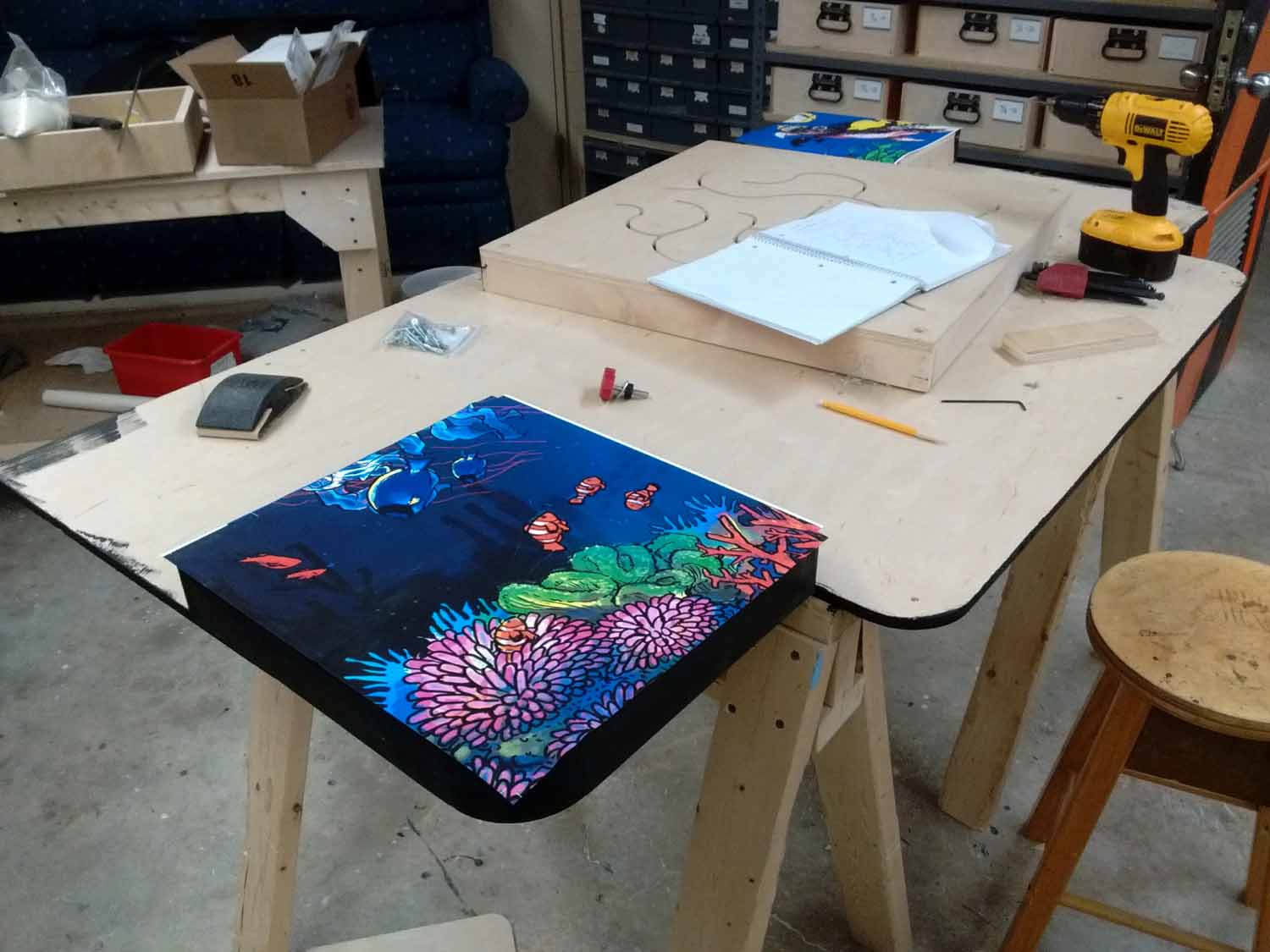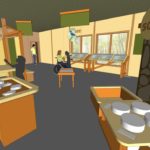This dinosaur exhibit refurbishment consisted mainly of graphic work, with the exception of a fossil-replacement project.
The documentation on the 12-year-old exhibit was sparse, and the original builder would not return our calls, so we had to conduct experiments to determine the concrete formulas that would best match the existing concrete.
The structures could not be moved, so we built a dust containment structure and worked on the concrete in the gallery.
We cut out the old pieces using a large angle grinder, hammer drill, reciprocating saw, hammer, and cold chisel.
We supported the new pieces with concrete, and made future replacement easier by adding a layer of plastic between the new fossil and the concrete below. The fossils are secured by the concrete around the perimeter.
Above: a new fossil, ready for exploration













































































































































